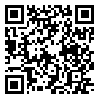Volume 15, Issue 1 (2015)
QJER 2015, 15(1): 185-208 |
Back to browse issues page
Download citation:
BibTeX | RIS | EndNote | Medlars | ProCite | Reference Manager | RefWorks
Send citation to:



BibTeX | RIS | EndNote | Medlars | ProCite | Reference Manager | RefWorks
Send citation to:
Mohammadi T, Omidvar S. Interaction Effects of Human Capital and Institutions on the Economic Growth and its Implications for Iranian Economy. QJER 2015; 15 (1) :185-208
URL: http://ecor.modares.ac.ir/article-18-6179-en.html
URL: http://ecor.modares.ac.ir/article-18-6179-en.html
1- Associate Professor of Economics, Allameh Tabataba'i University
2- Ph.D. Candidate in Economics, Allameh Tabataba'i University
2- Ph.D. Candidate in Economics, Allameh Tabataba'i University
Abstract: (6992 Views)
In this article, using two criteria of rivalry and excludability, the direct production factors are classified as physical capital, human capital and technology. Based on the new theories of economic growth, essential role of human capital in innovation, adoption and application of new technologies is emphasized. Then to explain differences of economic growth across countries, institutions as the fundamental causes of economic growth are discussed. It is argued that institutions provide circumstances in which proximate causes of production are accumulated and used. Institutions signal to the economic agents to pursue productive or rent seeking activities. In this regard, paradoxical findings of empirical studies as to effects of human capital on economic growth are analyzed. Using a cross-section data, based on 10-year average of output per worker for about 90 countries over the period 2001-2010, the interaction effect of human capital and institutional quality on growth is evaluated. The main implication of the model for Iranian economy is: Notwithstanding the huge investments in human capital, which mainly financed by oil revenues, low quality of institutions has led to slow economic growth.
Received: 2012/12/22 | Accepted: 2013/07/16 | Published: 2015/03/21
| Rights and permissions | |
 |
This work is licensed under a Creative Commons Attribution-NonCommercial 4.0 International License. |







